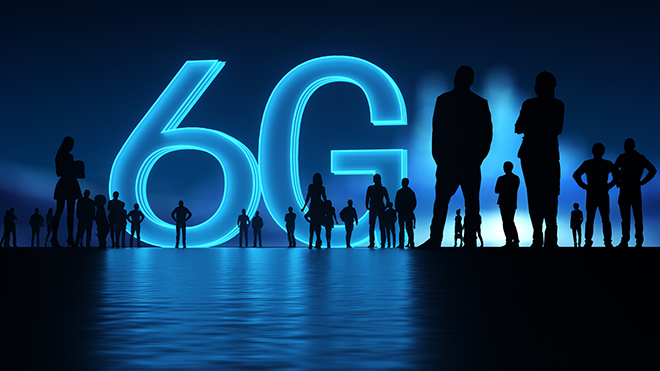Ready for 6G ? How AI will shape the network of the future ?
Ready for 6G ?
https://www.epicheroes.com/2022/09/29/google-ai-robot-is-here-most-advanced-robot-brain-ever/
Ready for 6G ? The technology of mobile phones has altered the way in which people comprehend and engage with the wider world as well as with one another. It is difficult to think of a technology that has had a greater significant impact on living in the 21st century.
The most recent innovation, known as the fifth generation of mobile standards or 5G, is currently undergoing the process of being implemented in certain regions all over the world. And that poses an obvious question. What aspects will play the most significant role in the evolution of the sixth generation of mobile technology? What makes 6G different from 5G, and what types of activities and interactions will it enable that aren’t conceivable with 5G?
As a result of the research conducted by Razvan-Andrei Stoica and Giuseppe Abreu at Jacobs University Bremen in Germany, we now have some kind of response to this question. These individuals have outlined the constraints that come with 5G as well as the aspects that they believe will drive the development of 6G. They came to the conclusion that artificial intelligence will be the primary factor driving mobile technology, and that sixth-generation wireless networks will be the driving force behind an entirely new generation of applications for machine intelligence. This was their key finding.
Join us for The Algorithm, where we take the mystery out of artificial intelligence!
To begin, some historical context. 5G represents a substantial improvement over its predecessor, 4G, according to any and all measures of comparison. Download speeds of up to 600 megabits per second are currently available through some of the earliest 5G networks, and these networks have the potential to get substantially faster. In comparison, 4G normally operates at up to 28 Mbits/s, and the majority of people who use mobile phones will have had the experience of having that rate grind to a halt from time to time for reasons that aren’t necessarily clear.
5G is undoubtedly superior in this regard and has the potential to completely supplant many traditional landline connections.
But these headline statistics don’t even begin to scratch the surface of the potential advantages. As an illustration, 5G base stations are meant to support up to one million connections, in contrast to the 4,000 connections that may be supported by 4G base stations. This should make a difference in the communication at large gatherings such as sporting events, demonstrations, and other similar events, and it could enable a wide variety of applications for the internet of things.
Then there is something called latency, which refers to the amount of time it takes for signals to move throughout the network. In contrast to 4G, which can have a latency of up to 50 milliseconds or more, 5G is expected to have a latency of just one millisecond. Every gamer will attest to the significance of this, since it improves the responsiveness of the player’s ability to operate the in-game characters with a remote control. However, a number of different telecommunications service providers have showed how the same advantage may be used to control drones with more precision and even carry out telesurgery procedures utilising a mobile connection.
All of this ought to be feasible with reduced power requirements to boot, and recent claims suggest that 5G devices ought to have battery lives that are ten times longer than those of 4G devices.
So how exactly does 6G improve upon that? It stands to reason that 6G will provide download rates that are even faster than those already available; current speculation suggests that they may approach 1 terabit per second.
However, what kinds of revolutionary advancements may it bring about? According to Stoica and Abreu, the answer is that it will enable rapidly changing collaborations on vast scales between intelligent agents solving intricate challenges on the fly and negotiating solutions to complex problems. These collaborations will be able to take place due to the fact that it will enable rapid change.
Consider the challenge of regulating the movement of autonomous vehicles through a significant urban area. Given that around 2.7 million vehicles enter a metropolis the size of New York every single day, this presents a huge difficulty.
Vehicles that drive themselves in the future will need to be aware of their location, their environment and how it is changing, as well as other road users such as pedestrians, cyclists, and other self-driving vehicles. This is necessary to ensure everyone’s safety. They will need to negotiate passage through the intersections and optimise their path in such a way that they reduce the amount of time it takes to get between locations.
That presents a considerable barrier in terms of computation. It will be necessary for vehicles to rapidly construct on-the-fly networks, such as when they are getting close to a specific intersection, and then practically immediately abandon those networks. At the same time, they will function as a component of wider networks that determine routes, travel times, and other relevant data. According to Stoica and Abreu, “Interactions will therefore be necessary in vast amounts, to solve large distributed problems where massive connectivity, large data volumes, and ultra low-latency beyond those to be offered by 5G networks will be essential.” [Citation needed] “Interactions will therefore be necessary in vast amounts, to solve large distributed problems where it will be essential to have massive connectivity, large data volumes,
Obviously, this is only one example of the type of cooperative effort that will be made feasible by the introduction of 6G.
Stoica and Abreu foresee a large variety of additional distributed problems that, when tackled with this kind of an approach, become tractable.
These will be based on the generation of enormous amounts of data in real time and the collaborative analysis of those data by several users. Network optimization is one obvious application, but other applications include monitoring and planning for financial markets, optimising health care, and “nowcasting,” which is the ability to predict and react to events as they occur on a scale that was previously unimaginable. One obvious application is in network optimization.
It is quite obvious that agents endowed with artificial intelligence are going to play a significant role in our future. According to Stoica and Abreu, “collaborative artificial intelligence is the key to harnessing the true power of such entities.” It is abundantly evident that in order to collaborate effectively, wireless communication is the only viable option due to the nature of the mobile society that has emerged in the 21st century.
That’s an intriguing look into the foreseeable future. Before a set of 6G standards can even be outlined, let alone approved, there is a great deal of work to be done in the way of negotiations and horse trading. But if Stoica and Abreu are right, artificial intelligence will be the primary driver that determines the form that future communications networks take.
https://www.epicheroes.com/2022/10/28/robosen-optimus-prime-transformers-best-self-transforming-toy/
Ready for #6G ? How #AI will shape the #network of the #future
Follow us for New Content Daily
Web – www.epicheroes.com
Twitter @epicheroes
Insta @epicheroesuk
http://www.youtube.com/c/Epicheroes
https://amazon.co.uk/shop/epicheroes
 Epic Heroes Entertainment Movies Toys TV Video Games News Art Pop culture news goodness
Epic Heroes Entertainment Movies Toys TV Video Games News Art Pop culture news goodness





